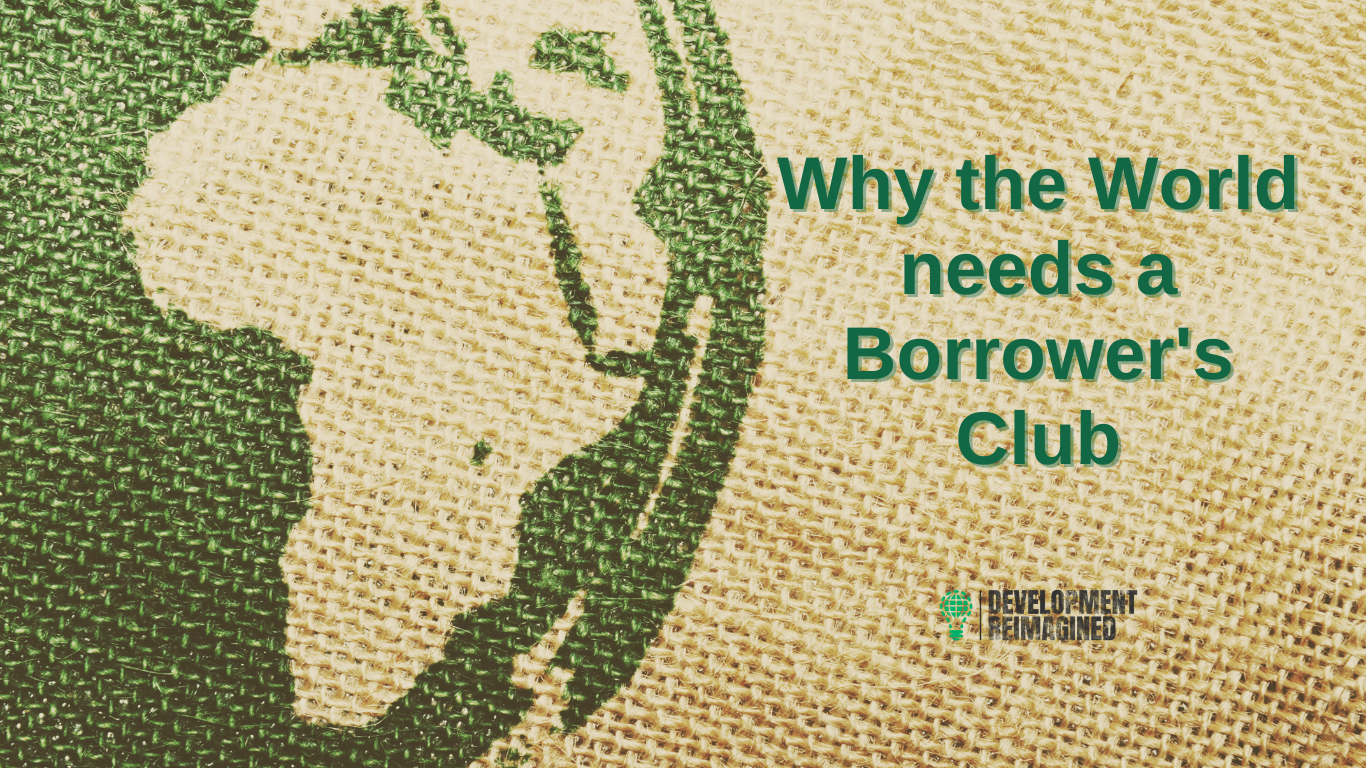Why? Because Zambia will now borrow more for recurring expenditure and less for development infrastructure such as roads. Only the latter inevitably improves connectivity and propels much-needed growth.
Nor is Zambia the only borrower that faces challenges negotiating with creditors. There are structural factors at play. Any observer can clearly see how creditors sit together in “committees” or “clubs” to discuss their positions, especially during debt restructuring. This is all geared towards getting a favourable outcome for themselves as creditors – whilst often not considering the borrower. That’s why we argue the international financial system is overwhelmingly creditor-centric.
As African countries seek better paths to development, can they also “club” together to get better outcomes and deals from creditors?
To make this strategy a reality, our experts at Development Reimagined have researched and defined the concept of a Borrower’s Club – borrowing from the ideas of microfinance articulated by Nobel Prize laureate Muhammad Yunus.
What is a Borrower’s Club and how does it work? In this strategic mechnaism, African countries “club” together, taking loans together and using each other’s growth prospects as collateral. The loan repayments will be small, and with low interest to allow easy payment – while also sufficient to build in a “cushion” for temporary collateral. Borrowers will appoint a representative on a rotational basis to interact with creditors on their behalf. In the event a project faces any challenges, delays on repayment issues then the borrower committee must agree for the cushion to be made available to support temporarily. Most importantly, borrowers in arrears do not get more loans.
The strategy of a borrower’s club has been proven in countless communities around the developing world. In fact, it entered the development literature when Yunus identified a group of poor women villagers who took loans together and used each other as collateral.
Yunus started by lending US$27 to women like these in 1976. By 1998, his microfinance initiatives had lent US$2.3 million, giving more communities access to credit that was not otherwise available. The framework of microfinance is now an integral part of many countries’ development strategies, those in Africa included.
Just as the women villagers had no access to credit, African countries face the same challenges. Credit is not easily available, and when it is, it is too expensive – creating the “Africa Risk Premium” where African countries pay more for loans than non-African countries with equivalent risk indicators.
This is just one reason why the Borrower’s Club is an innovative and timely strategy, enabling African countries to empower each other to access credit more easily – credit to build the infrastructure necessary for economic growth.
Our work at Development Reimagined to establish a Borrower’s Club is just one example of how we innovate for strategies that increase African agency – because today’s development problems need reimagined solutions.
Watch the full Borrower’s Club video below to learn more.
Download the full policy brief Reimagining the International Financial System for Africa above.


